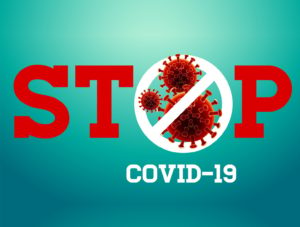Dec
6
COVID-19 and the Great Barrington Declaration
“To date, the Great Barrington Declaration has been signed by over 43,000 medical and public health scientists and medical practitioners…. Member of the general public can also sign the Declaration.” — Dr. Jay Bhattacharya (see update below)

Everybody is scared, frustrated, and/or angry about COVID-19 and the resultant measures being taken by those in power. It’s confusing, too. Can we trust the numbers? Which numbers? Why do the “experts” differ in their recommendations? Who can we trust to have the people’s best interests in mind? Are there ulterior motives behind things like lockdowns and mask mandates? Even with the recently announced vaccines, there are questions about safety, priority, use of cell lines from aborted babies, etc.
Rather than delve into this myself, I’d like to present some facts and analysis from someone eminently qualified and not involved in the politics. That source is Jay Bhattacharya, M.D., Professor of Medicine at Stanford University. He also has a PhD in economics and holds various related positions. He gave a panel presentation a couple months ago at a Hillsdale College Free Market Forum, and the article* I’ll be quoting from was adapted from that presentation.
Bhattacharya begins,
“My goal today is, first, to present the facts about how deadly COVID-19 actually is; second, to present the facts about who is at risk from COVID; third, to present some facts about how deadly the widespread lockdowns have been; and fourth, to recommend a shift in public policy….”
It is a very good read, and he explains things like “case fatality rate” and how the method normally used to compute it is inaccurate, negative impacts on public health from long-term lockdowns, herd immunity as a fact and not a strategy, etc. But, what I wanted to reproduce for you here is from the fourth section, titled “Where to Go from Here”:
“Last week I met with two other epidemiologists — Dr. Sunetra Gupta of Oxford University and Dr. Martin Kulldorff of Harvard University — in Great Barrington, Massachusetts. The three of us come from very different disciplinary backgrounds and from very different parts of the political spectrum. Yet we had arrived at the same view — the view that the widespread lockdown policy has been a devastating public health mistake. In response, we wrote and issued the Great Barrington Declaration, which can be viewed — along with explanatory videos, answers to frequently asked questions, a list of co-signers, etc. — online at www.gbdeclaration.org.
The Declaration reads:

‘As infectious disease epidemiologists and public health scientists we have grave concerns about the damaging physical and mental health impacts of the prevailing COVID-19 policies, and recommend an approach we call Focused Protection.
Coming from both the left and right, and around the world, we have devoted our careers to protecting people. Current lockdown policies are producing devastating effects on short and long-term public health. The results (to name a few) include lower childhood vaccination rates, worsening cardiovascular disease outcomes, fewer cancer screenings, and deteriorating mental health—leading to greater excess mortality in years to come, with the working class and younger members of society carrying the heaviest burden. Keeping students out of school is a grave injustice.
Keeping these measures in place until a vaccine is available will cause irreparable damage, with the underprivileged disproportionately harmed.
Fortunately, our understanding of the virus is growing. We know that vulnerability to death from COVID-19 is more than a thousand-fold higher in the old and infirm than the young. Indeed, for children, COVID-19 is less dangerous than many other harms, including influenza.
As immunity builds in the population, the risk of infection to all—including the vulnerable—falls. We know that all populations will eventually reach herd immunity—i.e., the point at which the rate of new infections is stable—and that this can be assisted by (but is not dependent upon) a vaccine. Our goal should therefore be to minimize mortality and social harm until we reach herd immunity.
The most compassionate approach that balances the risks and benefits of reaching herd immunity, is to allow those who are at minimal risk of death to live their lives normally to build up immunity to the virus through natural infection, while better protecting those who are at highest risk. We call this Focused Protection.

Adopting measures to protect the vulnerable should be the central aim of public health responses to COVID-19. By way of example, nursing homes should use staff with acquired immunity and perform frequent PCR testing of other staff and all visitors. Staff rotation should be minimized. Retired people living at home should have groceries and other essentials delivered to their home. When possible, they should meet family members outside rather than inside. A comprehensive and detailed list of measures, including approaches to multi-generational households, can be implemented, and is well within the scope and capability of public health professionals.
Those who are not vulnerable should immediately be allowed to resume life as normal. Simple hygiene measures, such as hand washing and staying home when sick should be practiced by everyone to reduce the herd immunity threshold. Schools and universities should be open for in-person teaching. Extracurricular activities, such as sports, should be resumed. Young low-risk adults should work normally, rather than from home. Restaurants and other businesses should open. Arts, music, sports, and other cultural activities should resume. People who are more at risk may participate if they wish, while society as a whole enjoys the protection conferred upon the vulnerable by those who have built up herd immunity.'”
I think this constitutes, as the original article called it, a sensible and compassionate anti-COVID strategy. Unfortunately, I have no confidence that the local, state, and federal governments (especially a Biden/Harris administration) will take it to heart, even if they are made aware of it.
Here is Bhattacharya’s conclusion:
“Together, I think we can get on the other side of this pandemic. But we have to fight back. We’re at a place where our civilization is at risk, where the bonds that unite us are at risk of being torn. We shouldn’t be afraid. We should respond to the COVID virus rationally: protect the vulnerable, treat the people who get infected compassionately, develop a vaccine. And while doing these things we should bring back the civilization that we had so that the cure does not end up being worse than the disease.”
I agree.
P.S. I just (on 12/5/2020) signed the Declaration. The current number of concerned citizens is over 677,000. The number of medical and public health scientists and medical practitioners who signed now totals over 50,000.
* Reprinted by permission from Imprimis, a publication of Hillsdale College.















